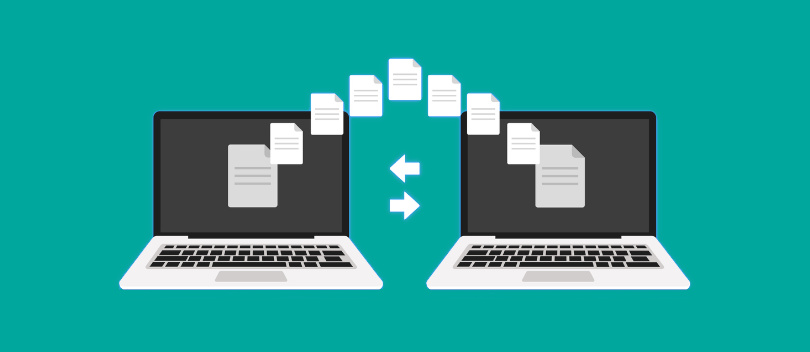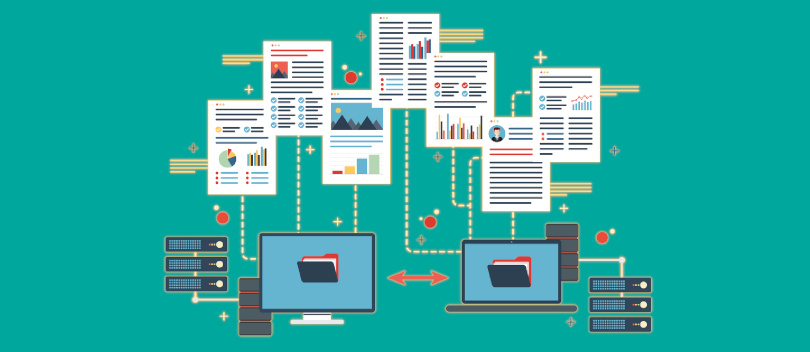How leaving the costs of paperwork and postage stamps behind is a lot easier than it looks.
In workplaces around the world, the digital revolution is well underway.
With that said, breaking headlines about data breaches and cyber security risks have left many councils, businesses, and board members holding on to hard copies, or jotting down notes by hand instead of working with digital documents or foreign concepts like ‘The Cloud’.
While fear may stoke these anti-digital fires, the facts, stats, and security figures are fast stacking up – rather than the paperwork! – in favour of digitally managing and distributing documents.
Whether you’re an accounting firm sending sensitive financial reports to clients, managing a committee, or an enterprise tracking board meetings and minutes, you’re likely well aware that decades long document management processes are buckling under the pressure in the same way desks are creaking under the weight of all those documents.
Transitioning away from a reliance on paper or insecure digital channels can be a boon for business. Thankfully doing so and embracing the security, productivity, and workflow of a cloud based environment has never been easier.
Digital Document Distribution? It’s a sensible solution…
Before we get into the ‘How?’, let’s take a moment to examine the ‘Why?’.
The benefits of moving from an unmanaged to a managed, digital document environment include:
- Slash paperwork and running costs
Physical documents all stack up. As do the costs! Transitioning away from traditional methods of working on – and sharing – documents saves both time and money by slashing annual outlay for on- and off-site storage, ink, toner, paper, and postage. - Store, share, and send securely
Every business’s tentative steps into the digital world are also often their last, leaving them juggling an insecure, slow, and inherently costly mix of standard delivery methods (snail mail and couriers) as well as easy – and easily compromised – online channels like email. - Do more, in less time
Most business is conducted online these days, so why should paperwork be any different? Something as simple as converting physical documents into a digital format, for example, can cost valuable time. Embracing the benefits of electronic document distribution can improve workflow, streamline processes, and boost overall productivity.
These 7 tips make it easy to transform the way you deal with documents, digitally

1. Audit processes, data, and documents
How are documents currently shared? Stored? Or kept secure?…or not, as the case may be?
Assessing your internal practices, policies, and processes around the creation, storage, and sharing of documents is a critical first step in determining both the size and scale of the task at hand, as well as how best to kick-start the transition to a wholly digital working environment.
2. Bring employees up to speed
Paper-based processes become well-entrenched over time, so you’ll need to account for lead time for training and bringing employees up to speed, as well as equipping them with compliant laptops, phones, and tablets.
In the case of Stellar, setup is simple and takes just minutes with no IT setup or in-depth training required. In fact, it works like any other app: simply download to iOS, Android, or Windows device…and you’re away.
3. Get clients on-board
Depending on the sector, clients may or may not be hesitant to transition to a digital environment. Clients within the legal or financial sector, for example, may hold reservations around compliance and security issues, so set out to highlight that going digital actually provides much greater oversight, control, and security which improves your ability to retain complete oversight and ensure compliance.
4. Start digitally signing documents
Fewer and fewer people carry a pen these days, yet many businesses still require physical signatures for the likes of NDAs. While it may be a small step, cutting out the time required to send, print, scan, and then return signed documents as part of a paper-driven process can quickly add up.
5. Maximise the use of templates
Transitioning to a digital environment can take time, but the ability to create, edit, and re-use digital templates that can then be shared and customised on the fly saves time and countless photocopies.
6. Reduce the reliance on paper
New habits take time to learn, so removing or discouraging the ability to fall back on familiar paper-based habits by decreasing the number of printers or stationery supplies is an easy way to curb the costs of printing and encourage the use of digital documents, instead.
7. Embrace digital document distribution software like Stellar
Software has become a mainstay in the business world. Mobile apps are used for stock-take in stores, for example, while accountants rely on Xero and other software in order to make their lives easier. So…why not paperwork, too?
Software such as Stellar Library makes the transition to a paperless workplace completely seamless, supplementing existing services you’re likely already using such as Dropbox or Drive with increased oversight and much more granular levels of control only available in a cloud-based software package designed from the ground up to securely store and distribute your documents.
The transition is seamless with Stellar Library
Whether you need to deliver sensitive data to sales people out on the road, or to staff and clients across the city, country, or across international borders, Stellar Library cuts out the costs – and downtime – of dealing with physical documents and makes it easy to create, store, and share anytime, anywhere, on any device.
By embracing digital document distribution software like Stellar, you’ll ensure the right people are receiving the right information while maintaining complete control over your sensitive data.
